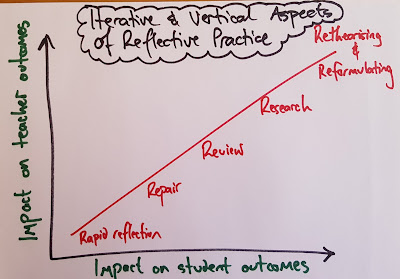Activity 3: Contribution of Teacher Inquiry Topics to my Communities of Practice

Ehara taku toa i te toa takitahi engari he toa takimano My strength is not that of an individual but that of the collective Communities of Practice (CoP) are a means though which all those involved can develop their knowledge competence through social interactions with like-minded individuals. In this sense, learning is an organic and social phenomenon. Those involved need to be invested in the issue/topic being inquired into and demonstrate engagement, alignment and imagination (Wenger, 2000), as well as being cognisant of - but willing to suspend the impact of - time constraints, and socio-cultural environment (ego and individual agendas) ( Kerno, 2008 ). See my previous blog post for more detail . I have two collaborative learning related teacher inquiry topics. Inquiry 1: When working with students on high stakes research based assessments over a long period of time, how do we avoid crossing the line from collaboration and into collusion? ...





